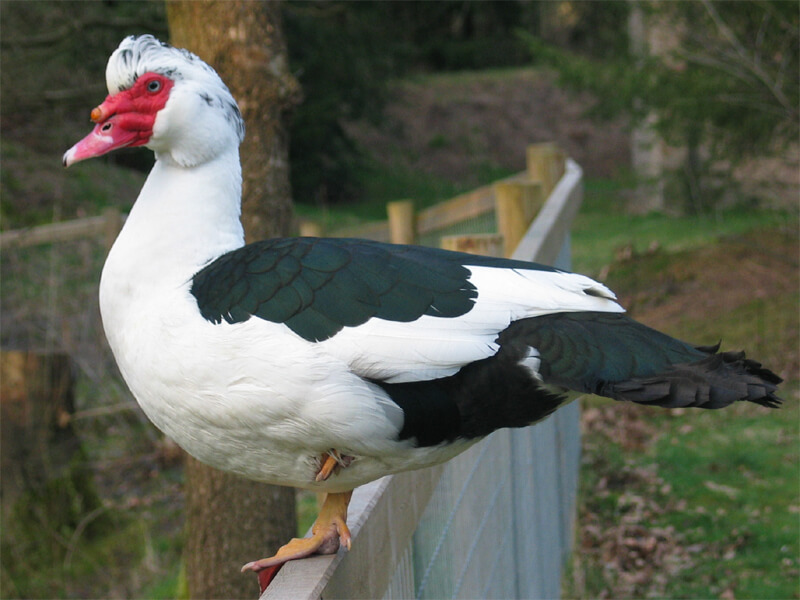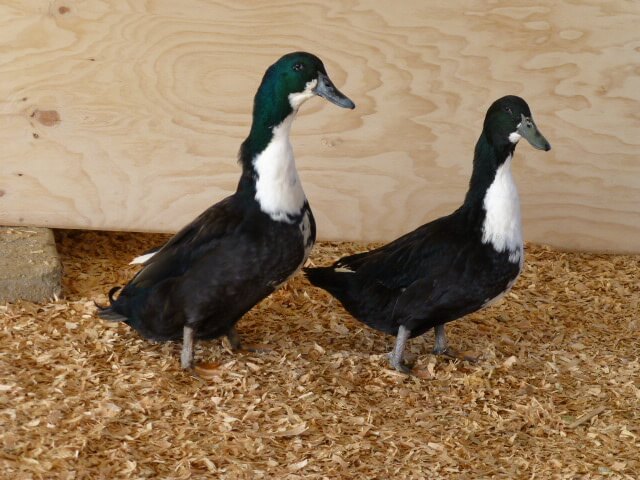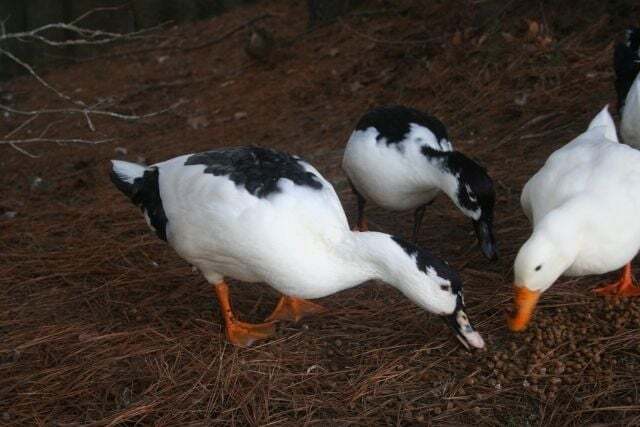6 Black And White Domestic Ducks to Rear for a Charming Backyard Flock
When people look for beautiful ducks to raise at home, they’re often drawn to the most colorful breeds. But if you ask me, beauty in ducks goes far beyond bright plumage. Some of the most striking ducks you can keep wear simple black-and-white coats — a timeless contrast that never fails to impress. If we were talking about ducks in general, both wild and domestic, I could easily list over 20 species with this elegant coloration. However, when it comes specifically to domestic ducks, only a handful truly stand out. So, which breeds proudly display this classic black-and-white look? Here are six of the most common ones worth knowing.
1. Muscovy Duck

The first black-and-white domestic duck that many people instantly recognize is the one with bright red, bumpy skin around its face — the impressive and unmistakable Muscovy Duck. These ducks come in many colors, but one of the most eye-catching is the black-and-white variety. Their white feathers often mix with glossy black patches that shine green or purple in the sunlight. Muscovies are quiet compared to most ducks—they don’t quack much, but they make gentle hissing and cooing sounds instead. They’re great for keeping around farms because they eat lots of insects, weeds, and even small pests. Muscovies also make devoted parents and can hatch large clutches of ducklings several times a year.
2. Magpie Duck

Named after the bird it resembles, the Magpie Duck has a neat black-and-white pattern that looks like it’s wearing a tuxedo. Most have white bodies with black patches on the head and back, though sometimes the black can fade as they age. They’re cheerful, active ducks that love to forage in the grass for bugs and greens. Magpies are also excellent layers, often producing 200 or more eggs each year. Their calm nature makes them easy to care for, and their tidy markings make them a real favorite among backyard duck keepers.
3. Ancona Duck

The Ancona is a beautiful, friendly duck known for its unique black-and-white splashes that never look the same on any two birds. One might have a black face and white chest, while another could be mostly white with a few black spots. Anconas are hardy and adaptable, laying plenty of large eggs in shades of white, blue, or green. They enjoy foraging and are gentle enough to keep with other birds. Their soft, low voices and playful personalities make them a joy to watch around the pond or garden.
4. Swedish Black (Blue Swedish) Duck

Among the friendliest of domestic ducks, the Swedish Black, also known as the Blue Swedish, shows off a smart and tidy look. The Black Swedish has glossy black feathers that shimmer green in the sunlight, paired with a neat white bib on its chest, while the Blue Swedish wears soft bluish-gray feathers with the same white patch. These ducks are calm and easy to handle, making them perfect for small farms or backyards. They lay a fair number of large, white eggs and enjoy foraging in grassy areas for insects and plants. Their gentle quacks and peaceful behavior make them a favorite with families and bird lovers alike.
5. Pekin Crosses (Mixed Breeds)

Most people know the Pekin as the classic big white duck, but when it’s crossed with darker breeds like the Cayuga or Magpie, you can get some truly beautiful black-and-white patterns. These mixed ducks can have anything from white faces and dark wings to patchy markings across their whole bodies. Because they’re crossbreeds, their looks and personalities can vary quite a bit, but many inherit the Pekin’s friendly nature and the hardiness of their darker parents. They’re usually good egg layers, grow quickly, and make lively additions to a mixed flock.
6. Elderly Cayugas

Cayugas are famous for their rich, black feathers that shine with green and purple tones, but as they grow older, something magical happens, especially to females—their feathers begin to turn white. Over time, an elderly female Cayuga can end up looking black and white, almost like it has frosted tips! This color change doesn’t affect their health; it’s just a sign of maturity. These ducks are quiet, gentle, and easy to keep, enjoying both ponds and grassy yards. They also lay dark, almost charcoal-colored eggs early in the season, which gradually lighten as the weeks go by.
